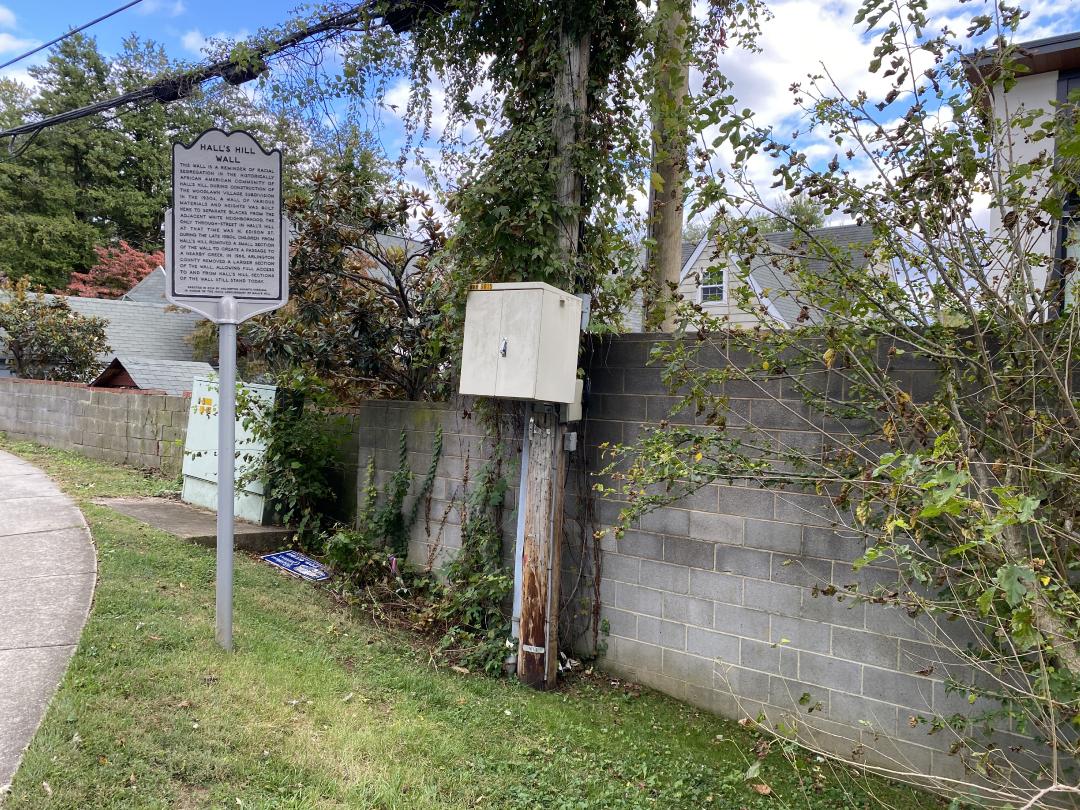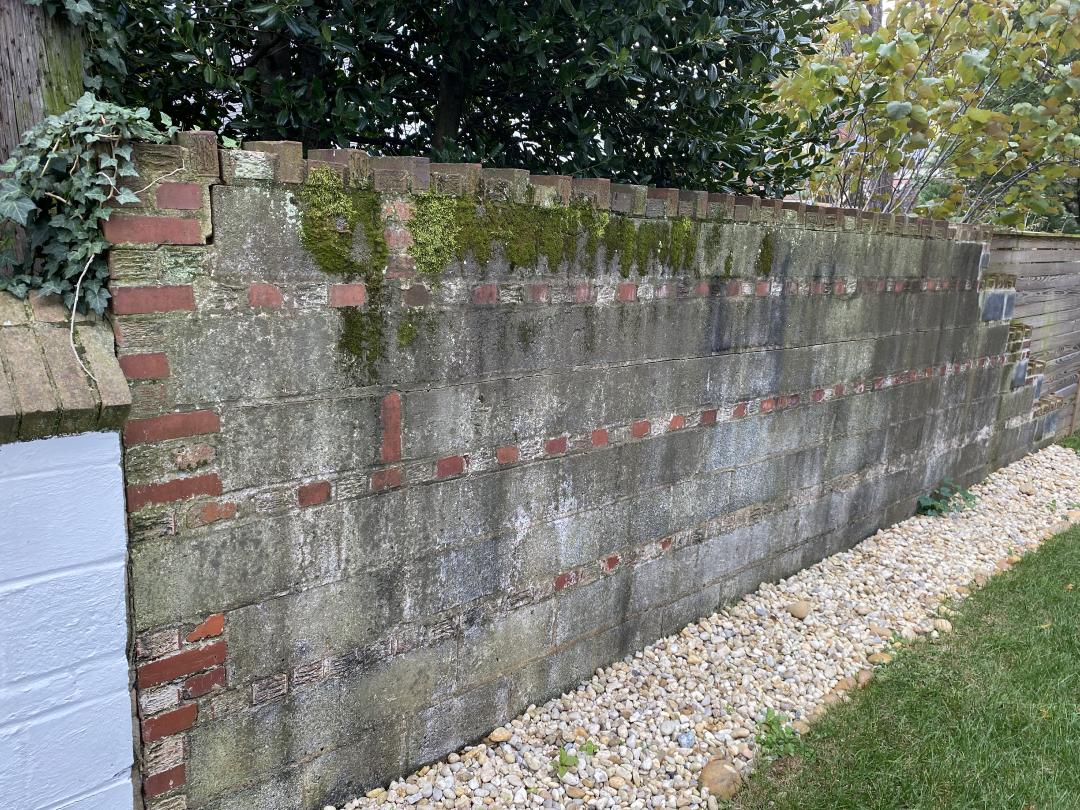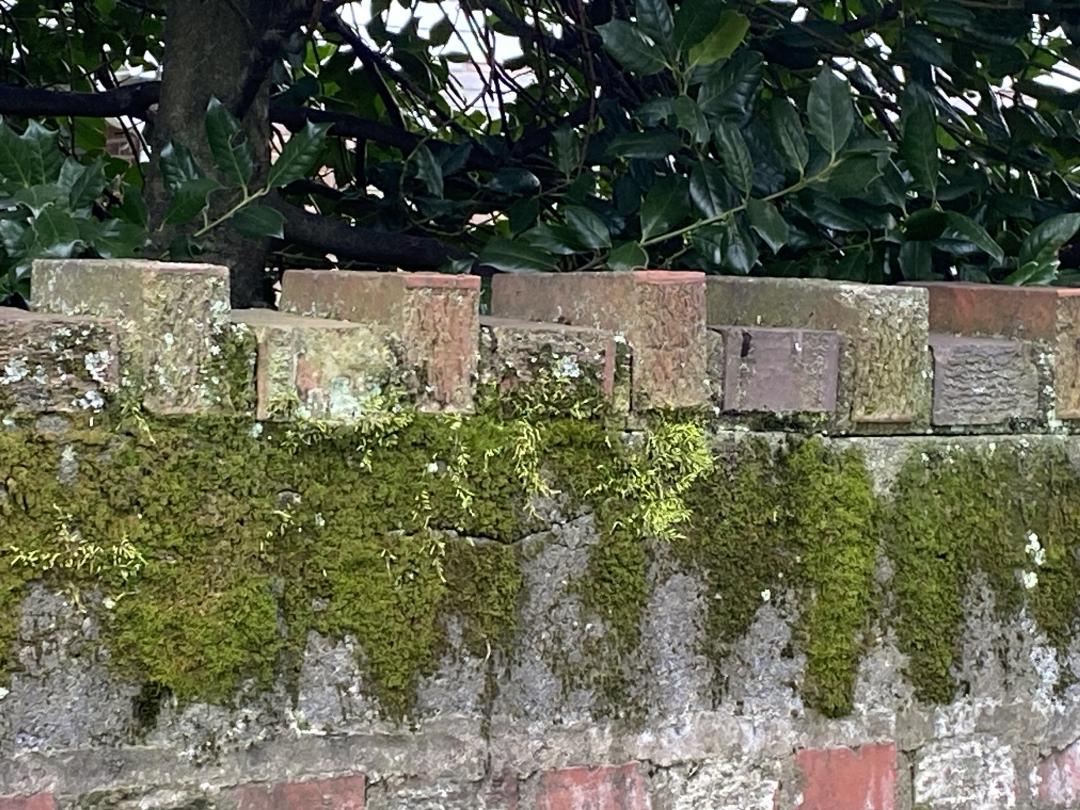Hall's Hill Segregation Wall

Along the rear property line of the white homes which bordered Hall's Hill, including the neighborhoods of Fostoria and Waycroft, residents constructed a seven foot tall cinderblock wall.
In 1930, Arlington passed a new Zoning and Planning Ordinance, which hurt Arlington's African-American communities in several ways. The legislation tried to limit multifamily housing, which existed almost exclusively in black communities at the time. This legislation also required expensive renovations (mostly connections to public sewers), which must be undertaken by professional contractors. Many of the working-class residents of Hall's Hill, who had traditionally built and renovated their homes, could not pay for these improvements.
One element of this ordinance that impacted Hall's Hill was a provision allowing for "the construction of a rear fence or wall to a height not exceeding seven feet." This provision allowed for the continuation of racialized building practices meant to isolate and more firmly segregate Hall's Hill. Residents constructed a seven-foot-tall cinderblock wall along the rear property line of the white homes bordering Hall's Hill, including the neighborhoods of Fostoria and Waycroft.
This wall construction was executed on an individual home-owner level; however, it was planned out enough that by the early 1940s, Hall's Hill was quartered off. Since its founding, Hall's Hill's residents have used isolation strategies to insulate themselves
from hostile white neighbors. Early roads and institutions faced into the community and had few external access points.
However, this new, more pronounced division by local white residents created a physical barrier to punctuate Hall's Hill's segregated status in an area that was otherwise considered the domain of white suburban development. The wall meant the community could not expand and had only one entrance or exit. In places, the wall was six inches thick, generally over six feet high, and often uneven and jagged on top to prevent people from climbing over it.
In 1966, the Langston School PTA, United Churchwomen of Arlington, and several African-American groups requested an opening in the wall for children going to Woodlawn Elementary School. “The retention of the wall would have forced several students to walk an extra 14 to 15 blocks to reach their new classroom.” This opening was around Culpeper and Abingdon.
Traces of the wall remain.
Images


